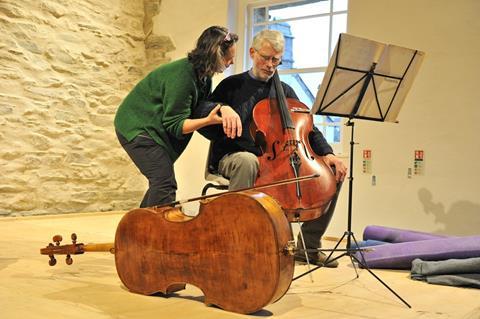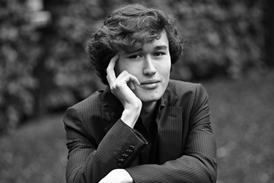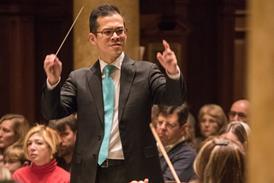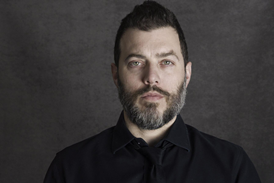Cellist and workshop leader Ruth Phillips explains how yoga and meditation liberated her from the prison of stage fright

Many people ask me on Breathing Bow retreats if stage presence is something we can practise, if it is possible to find a way to be exactly where we are - in a concert hall with an audience right here and right now, about to share what we love?
I believe that the answer is yes.
Musicians’ preparation for a concert day can range from taking beta blockers to eating bananas. However, as soon as we are on stage we feel fear. Fear of losing control or mental focus, and above all fear of judgement. Our muscles contract, our heart rate speeds up, we go blank, our bow shakes, we sweat… the list of symptoms for ‘stage fright’ is endless and for many of us, coping with them simply isn’t enough. Why would we want to play music if concerts were merely to be coped with not rejoiced in?
We fight or try to ‘get over’ the fear. We tell ourselves how foolish we are to feel it (‘There’s nothing to be frightened of!’), or we boost ourselves up with ‘positive’ thoughts – which are in fact just judgements (‘You’re wonderful!’ ‘No-one’s here to judge you’). Or we pretend (‘Imagine the public naked!/ that you are on a beautiful beach/that you are Steven Isserlis!’) We practise as much control as possible and cram our minds with thoughts.
But what if we were to stop fighting and actually listen to the fear?
Marshall Rosenberg, in his work on ‘Non-Violent Communication’, says that all humans share the same fundamental needs, and that every emotion is the expression of either a met (‘positive’ emotions) or an unmet (‘negative’ emotions) need. Through the ‘negative’ emotion of fear we could bring our attention to the unmet needs that we have as performers, a list of which would go something like this:
- Stability
- Ease
- Efficacy
- Space
- Freedom
- Peace.
- Security
- Connection
- Spontaneity
- Presence
- Expression
- Contribution
Most of us, surely, would love to feel all these things when we are on stage! So, how can we practice them, so that we are fulfilled not just in the practice room but also on stage?
Personally, it is through yoga and meditation that I have been liberated from the prison of fear and found joy and presence on stage, but there are many other doorways. Alexander Technique, T’ai Chi and Feldenkrais, for example. Whatever discipline we choose, it seems to me that practising the following things are key:
- Tensegrity
- Non-doing.
- Getting ourselves out of the way
- Presence
- Breath
Tensegrity
Obviously, we need tension to move, even to sit, but we also need release. Life and music are a constant play between tension and release. The pull of a wave, a dominant chord resolving to the tonic, an in and an out-breath, an up and a down bow all express this perfect relationship, the word for which is Tensegrity.
Tens(ion) plus (int)egrity.
Tensegrity is a structural principal of geometry where shapes benefit from strength and flexibility due to the push and pull of their parts – Will Nagel
By using our entire body as a biomechanical system - abandoning ourselves to gravity and having movement flow from our core through to our limbs - we can learn to play with stability, efficacy and ease.
Non-doing
To relax is not to collapse….It is not a state of passivity but, on the contrary, of alert watchfulness. It is perhaps the most ‘active’ of our attitudes, going ‘with’ and not ‘against’ our body and feelings – Vanda Scaravelli (Awakening the Spine)
The tennis player observes the ball as it leaves his racket and completes the trajectory he has sent it on. He is no longer ‘in control’ of the ball but rather relaxed, alert and watchful. Primed for the return. Once we have learned to initiate movement from our core, we must also practise this attitude on non-doing, in which we find space, peace and freedom.
Getting ourselves out of the way
‘When we relax about imperfection, we no longer lose our life moments in the pursuit of being different and in the fear of what is wrong.’ – Tara Brach, meditation teacher
We fear that unless we inject every phrase with our ‘personality’, our ‘interpretation’ will be boring. However, when a musical line falls like an autumn leaf, or rises like an eagle soaring on a thermal, is this our personality? Or our interpretation? When we are able to get ourselves out of the way, there is no ‘I’ to judge or be judged. Because there is no judgement there is no duality, no perfection, no imperfection, no right, no wrong, no them (the audience) and us (the performer). Instead, there is security and connection.
Presence
‘In order to really be, you have to be free from the thinking…’
‘Non-thinking is an art and, like any art, it requires patience and practice.’
– Thich Nhat Hanh (Silence: The Power of Quiet in a World Full of Noise)
Thought is necessary. We need to think during our practice - about the composer’s life, the harmony, the metre, the structure - but thought in the form of planning, judging, remembering and commenting takes us out of the present moment, which inhibits our ability to listen. Observation, however, which we develop through meditation practice, focuses our attention on the present and brings spontaneity.
The Breath
‘The bow must be a living thing at all times, and all living things need to breathe’ – Steven Isserlis, cellist
For me, the breath is the thing that binds all of this together. No-wonder it is at the root of so many spiritual practices! It is inspiration and expression, tension and release, taking in and letting go, expansion and contraction. It is not ‘ours’ though it passes through us, and it connects us with ourselves, our bodies and the audience. With all living things. The ocean breathes, trees breathe….It is everything we are and everything music is. When we are aligned and in harmony, we feel as if we are being breathed, just as we can, in performance, feel like the music is playing us. Only then we can find true expression and make a contribution.
This blog was originally published in September 2018.





























No comments yet